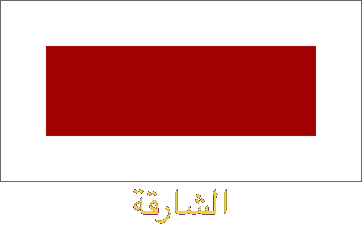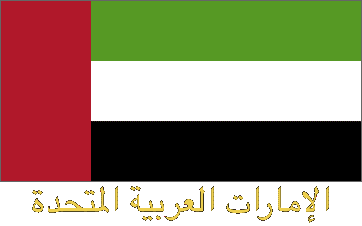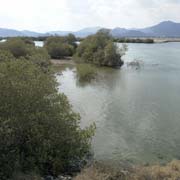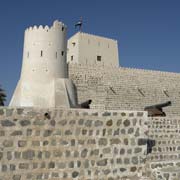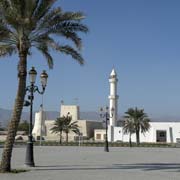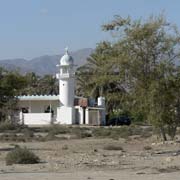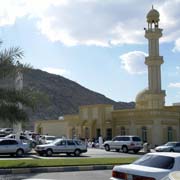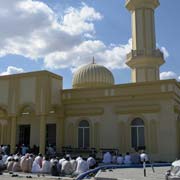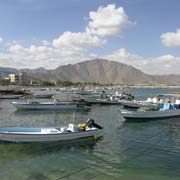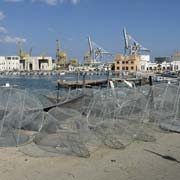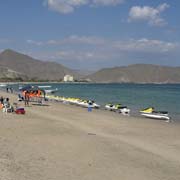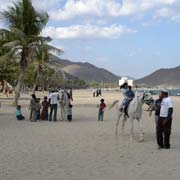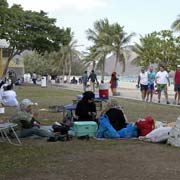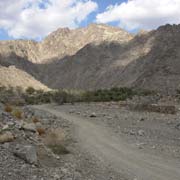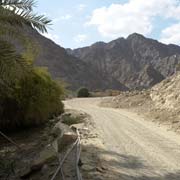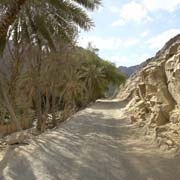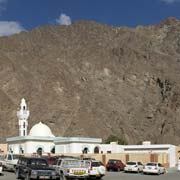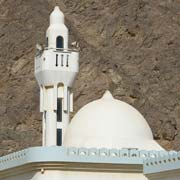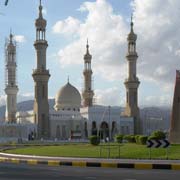Photos of exclaves of the Emirate of Sharjah, United Arab Emirates
Enclaves of the Emirate of Sharjah
The Emirate of Sharjah also has authority in a number of small enclaves on the east coast as a result of local rulers being members of the Qawasim clan of Sharjah and Ra's al-Khaimah. There are 3 enclaves within the Emirate of Fujairah along the Gulf of Oman: Kalba, Khor Fakkan and Dibba al-Hisn, plus Nahwa, a tiny enclave inside an enclave belonging to Oman
you may then send it as a postcard if you wish.
Kalba, just north of the border with Oman and just south of Fujairah city is a small town that was under Portuguese rule in the 16th century; it was referred to as Chelb. Khor Kalba (Kalba Creek), a mangrove swamp and officially designated as a Nature Reserve is located further south of the town on the Omani border. In 1903 Kalba, ruled by a branch of the Qawasim dynasty, achieved de facto independence from Sharjah and was recognised as the independent Kalba Emirate by Britain on 8 December 1936. It was re-incorporated into Sharjah in 1952. It has a small fort, between 150 and 200 years old, and some nice mosques.
Khor Fakkan (or Khawr Fakkan) is, after Fujairah city, the largest town on the east coast, set on the picturesque bay of Khor Fakkan, which means "Creek of Two Jaws". In the 17th Century the Portuguese built a fort here but this was already in ruins in 1666. In 1623 the Persian navy invaded under control of the Omani Sheikh Muhammad Suhari. Then In 1737, long after the Portuguese had been expelled from Arabia, the Persians again invaded Khor Fakkan. But in 1765 Khor Fakkan was ruled by a sheikh of the Al-Qasimi, Sharjah's ruling family, the reason why it is a Sharjah enclave. It is a very attractive place, with a white sand beach and a Corniche with gardens, picnic places and children's playgrounds. There is a fishing harbour and also a natural deep water port which is now a major container terminal.
Inland from Khor Fakkan is the Omani enclave of Madha. And inside Madha is the village of Nahwa, part of the Emirate of Sharjah. So this village has the unique distinction of being an enclave inside an enclave. It is reached by a gravel road and has a mosque set against a mountain backdrop.
Dibba, the northernmost town on the UAE's east coast is actually made up of three villages, each with a different ruler: in the south is Dibba Muhallab, belonging to Fujairah; then Dibba Hisn, belonging to Sharjah; and finally Dibba Bayah that is part of Oman and the southernmost point of Oman's territory in the Musandam peninsula. There is no border control here. Dibba Hisn is the smallest in size among the other Dibbas; it has an impressive mosque, a fish market and an ancient fortress ("Hisn"), after which it is named. It has been an important site of maritime trade and settlement since the pre-Islamic era. It has had a very complex history: around the arrival of Islam it had an important market and at one stage was the Omani capital. Soon after the death of the Prophet Mohammed in 632, a rebellion broke out at Dibba with some people rejecting aspects of Islam, refusing to pay Zakat, the Islamic principle of giving a percentage of one's income to charity. This was an act of "Ridda" (apostasy) and it triggered a great battle. Victory by the Muslim armies in 633 traditionally marks the end of Islam's conquest of Arabia. Two centuries later, during the time of the Abbasid caliph Al Mu'tadid (870 - 892 CE), another great battle was fought at Dibba during the conquest of Oman by Muhammad bin Nur, the Abbasid governor of Iraq and Bahrain. From 1624 to 1648 it was occupied by the Portuguese; it is believed they built a fort here.
